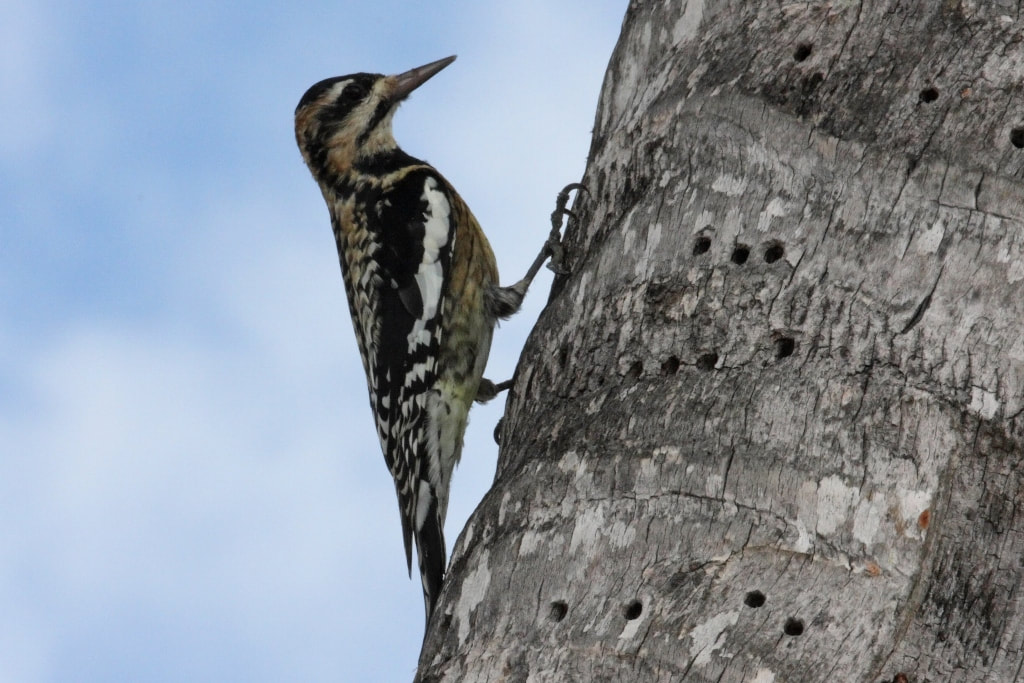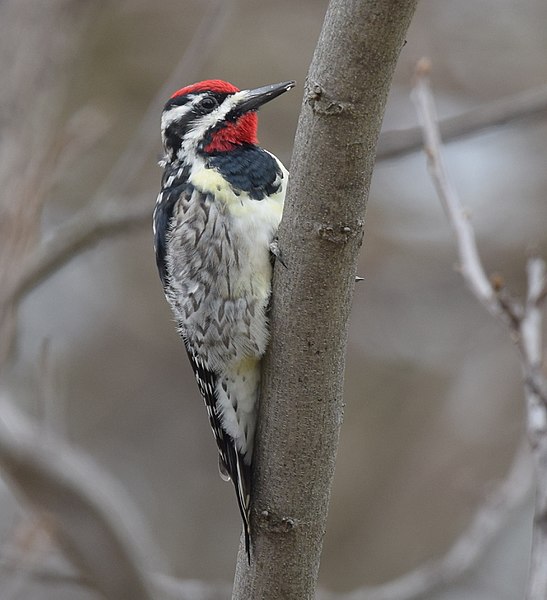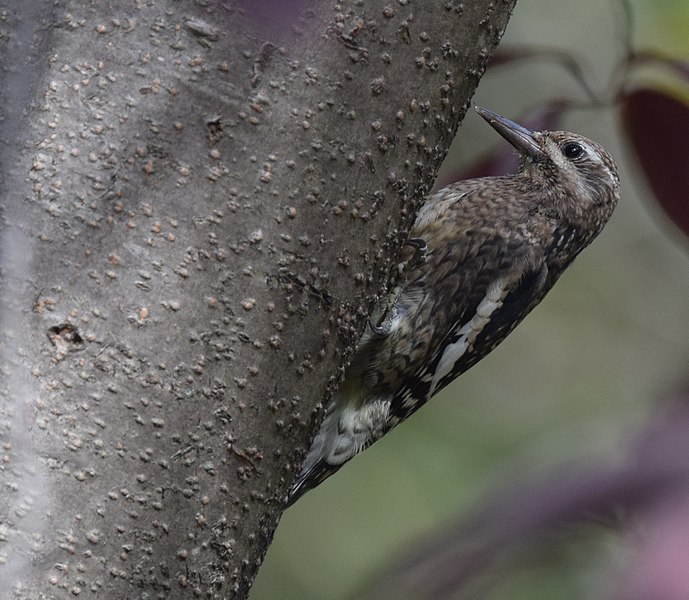|
|
yellow-bellied sapsucker
Sphyrapicus varius
Identification:
This robin-sized woodpecker has three distinct plumages. All three have a marked vertical white patch along the wing, and a stout, longish bill. The adult male has a red crown and throat; the adult female has a red crown but a white throat. Adults have a pale yellow to whitish breast. The juveniles have mottled brown bodies and crown, and sometimes white markings around the eye. Behavior: Aside from typical woodpecker behavior such as hitching up and down trees, flying in undulating patterns, and drumming, the Yellow-Bellied Sapsucker is known (and named) for its tidy rows of sap wells. In spring it excavates round xylem wells –tapping fluid that is rising up to branches; in summer it makes rectangular phloem wells – intercepting fluids moving downward. These fluids are rich in sugars and may attract other bird species such as hummingbirds. It tends these wells continually to keep the flow open. Mixed forests are preferred, especially if they have birchs, sugar maples, red maples, or hickories. The Yellow-Bellied Sapsucker often excavates a nest cavity in an infected quaking aspen. What brings it to the SBG? Food, cover, less likely nesting sites. Central Pennsylvania is within its breeding range and it does prefer young successional habitat for nesting, but the sole SBG sighting (as of early 2018) was in October 2017, so it was probably a migrant bird on its way to wintering grounds. When can I see it? Year-round. Most range maps and Cornell Lab account characterize the Yellow-Bellied Sapsucker as a “complete” migrant, meaning it winters in one place and breeds in another. They call it a “short to medium distance” migrant because but it travels ‘only’ as far as the southern US, Mexico, and the Caribbean. However, e-Bird data collected from citizen scientists show that in central Pennsylvania the bird has been sighted every month of the year. |



